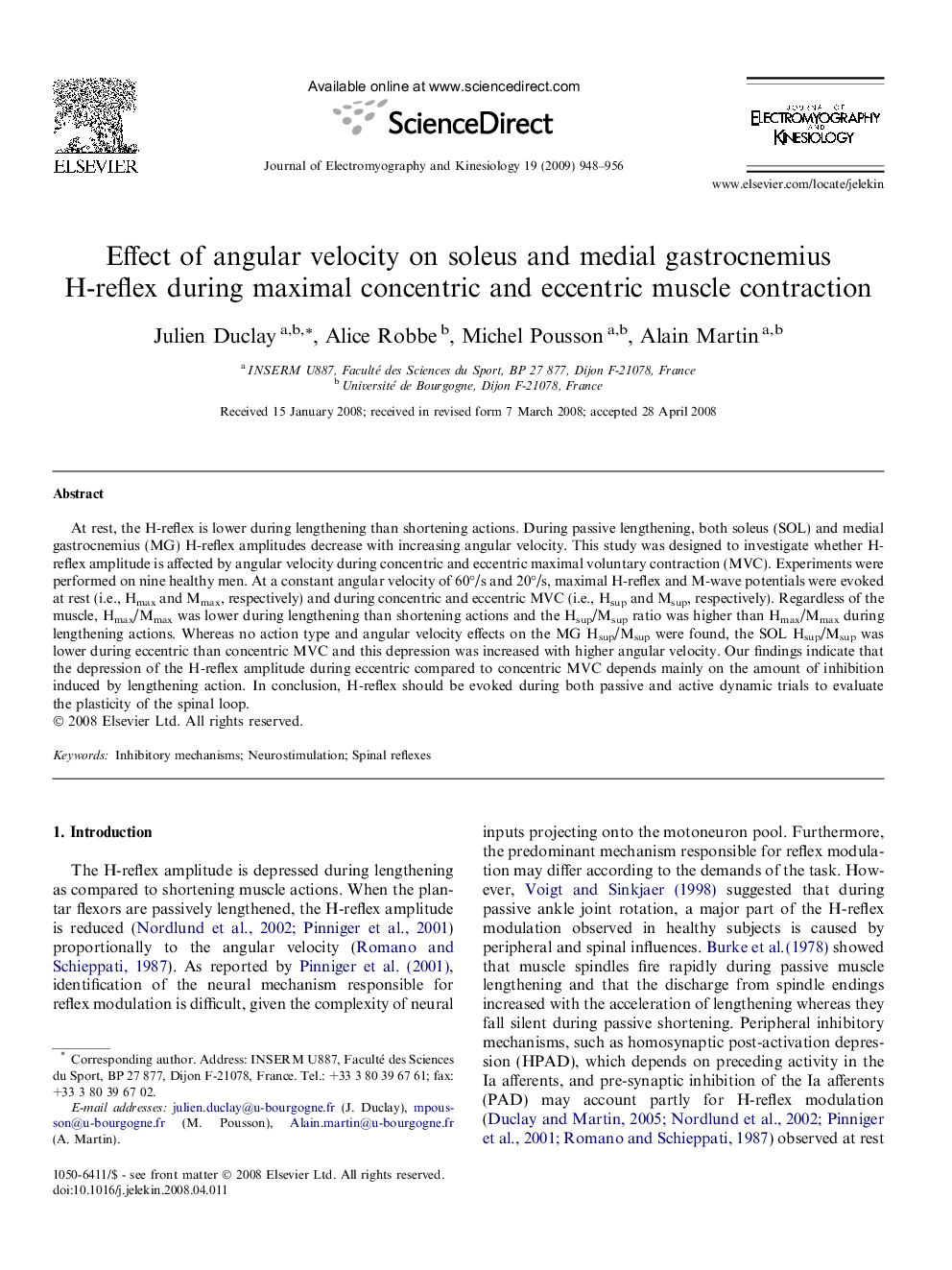| Article ID | Journal | Published Year | Pages | File Type |
|---|---|---|---|---|
| 4065233 | Journal of Electromyography and Kinesiology | 2009 | 9 Pages |
At rest, the H-reflex is lower during lengthening than shortening actions. During passive lengthening, both soleus (SOL) and medial gastrocnemius (MG) H-reflex amplitudes decrease with increasing angular velocity. This study was designed to investigate whether H-reflex amplitude is affected by angular velocity during concentric and eccentric maximal voluntary contraction (MVC). Experiments were performed on nine healthy men. At a constant angular velocity of 60°/s and 20°/s, maximal H-reflex and M-wave potentials were evoked at rest (i.e., Hmax and Mmax, respectively) and during concentric and eccentric MVC (i.e., Hsup and Msup, respectively). Regardless of the muscle, Hmax/Mmax was lower during lengthening than shortening actions and the Hsup/Msup ratio was higher than Hmax/Mmax during lengthening actions. Whereas no action type and angular velocity effects on the MG Hsup/Msup were found, the SOL Hsup/Msup was lower during eccentric than concentric MVC and this depression was increased with higher angular velocity. Our findings indicate that the depression of the H-reflex amplitude during eccentric compared to concentric MVC depends mainly on the amount of inhibition induced by lengthening action. In conclusion, H-reflex should be evoked during both passive and active dynamic trials to evaluate the plasticity of the spinal loop.
